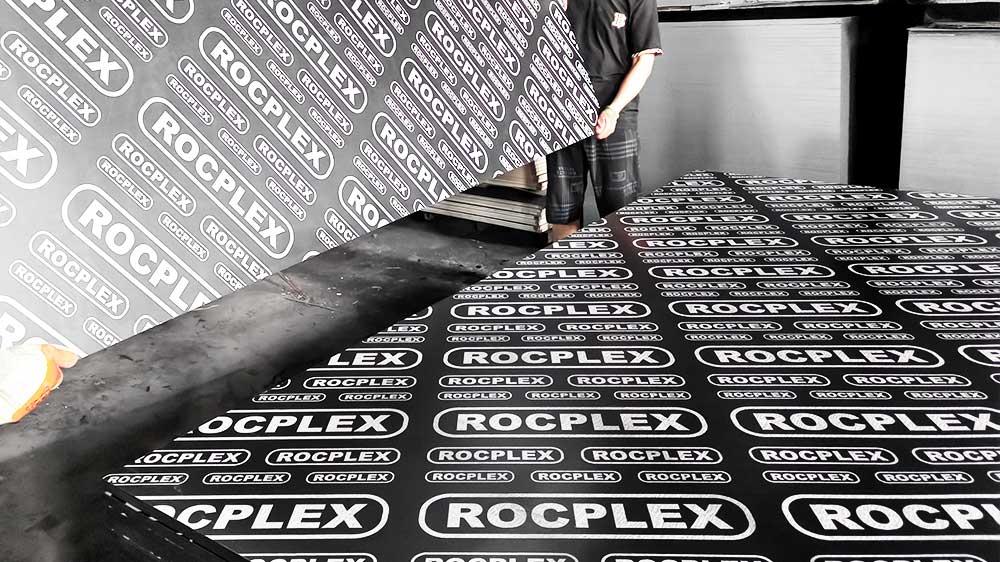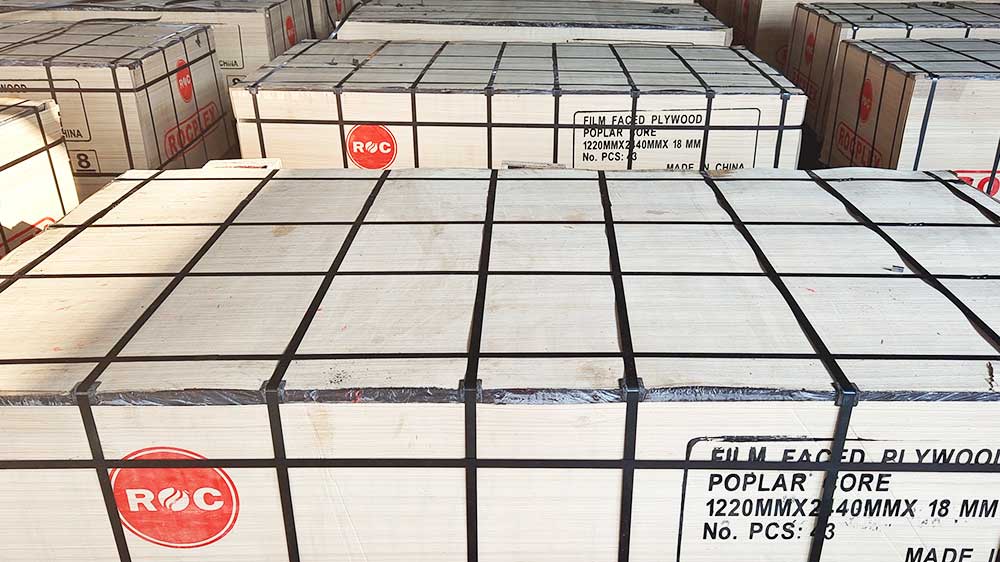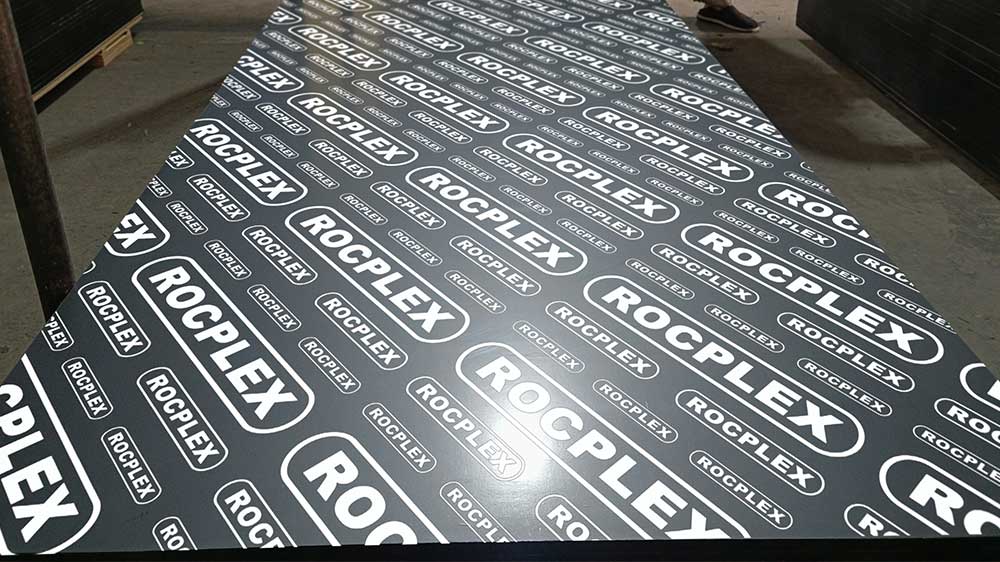What is Waterproof Plywood?
Waterproof plywood, as its name suggests, is a type of plywood designed to resist water, moisture, and humidity. It is an essential material in construction, especially for projects where wood will be exposed to wet conditions or changes in humidity. Its durability makes it a go-to choice for applications such as bathroom flooring, outdoor decking, and even boat building.
Plywood is made by gluing together several thin layers of wood veneer, with each layer placed at a 90-degree angle to the one below. This cross-grain structure provides additional strength and resistance to warping, splitting, and moisture damage. Waterproof plywood takes this a step further by using phenolic resin and other waterproof adhesives, ensuring that the wood remains intact even after exposure to water.
Different types of waterproof plywood include marine plywood, water-resistant plywood, and treated plywood. Marine plywood is specifically designed for environments that experience constant moisture, such as boat hulls and docks. Water-resistant and exterior plywood, on the other hand, are used in general construction for outdoor and indoor projects where occasional moisture exposure is a concern. Phenolic plywood is another variant known for its strong waterproof qualities and durability.
The Strengths of Waterproof Plywood
Waterproof plywood stands out from standard plywood due to its enhanced resistance to water and moisture. This key feature makes it perfect for a wide range of applications where long-lasting performance is needed. Let’s explore why waterproof plywood is the preferred choice for projects in wet environments.
Durability in Wet Conditions
Waterproof plywood is designed to handle constant exposure to water without deteriorating. Traditional plywood, when exposed to water over time, can swell, delaminate, or rot. Waterproof plywood, however, is made using waterproof adhesives like phenolic resin, which ensures the veneers stay bonded even when submerged in water for extended periods. This makes it a reliable choice for outdoor construction projects, such as decking, fences, or even outdoor furniture.
Marine plywood is known for its high-quality construction and moisture resistance. It is ideal for boat building or coastal construction. This waterproof plywood is made with layers of hardwood veneer.
Each layer is bonded with waterproof glue to ensure maximum durability. These features allow marine plywood to perform well in harsh conditions.
Versatile Applications
Waterproof plywood can be used for a wide range of construction and DIY projects, from building bathroom cabinets to creating outdoor playhouses. Here are some common uses:
- Bathroom and Kitchen Renovations:Waterproof plywood is a popular choice for wet areas like kitchens and bathrooms. It can be used for cabinets, flooring, and subflooring, providing a strong, moisture-resistant base that helps prevent mold and water damage.
- Outdoor Decking and Fencing:Exterior plywood and treated plywood are excellent materials for outdoor projects. Their resistance to moisture ensures that your deck or fence will remain sturdy and attractive, even after exposure to rain and humidity.
- Boat Building and Marine Applications:Marine plywood is specially treated to handle the constant moisture present in marine environments. Whether you’re building a boat or constructing a dock, marine plywood is the best choice for ensuring long-term durability in water.
- Roofing and Wall Sheathing:Phenolic plywood, which is treated with phenolic resin for enhanced waterproofing, is often used in roofing and wall sheathing for its ability to resist moisture and offer structural support.
Types of Waterproof Plywood
There are several types of waterproof plywood, each designed for specific applications. Understanding the differences between these types can help you choose the right plywood for your project.
Marine Plywood
Marine plywood is the highest-grade exterior plywood, specifically engineered to withstand constant exposure to water. It is made from durable hardwood veneers, which are bonded together using waterproof glue. Unlike other types of plywood, marine plywood is virtually free of voids or gaps, ensuring that water cannot penetrate its surface.
Marine plywood is ideal for applications that involve direct contact with water, such as building boats, docks, or marine structures. It is also commonly used in construction projects located near water, where the wood will be exposed to moisture and humidity.
Water-Resistant Plywood
Water-resistant plywood, while not as robust as marine plywood, offers a good level of protection against occasional moisture exposure. This type of plywood is often used in indoor applications where humidity or water splashes are a concern, such as in kitchens, bathrooms, or laundry rooms. It is made using water-resistant adhesives, which help prevent the wood from warping or swelling when exposed to moisture.
Exterior Plywood
Exterior plywood is designed to be used outdoors or in areas exposed to the elements. It is typically treated with special chemicals or sealants that protect the wood from moisture, insects, and decay. This makes it an excellent choice for outdoor projects like siding, roofing, and decking. Exterior plywood is strong, durable, and can withstand varying weather conditions, making it one of the most versatile types of waterproof plywood.
Treated Plywood
Treated plywood undergoes a special treatment process to enhance its resistance to moisture, rot, and insects. This type of plywood is often used in outdoor construction projects, where exposure to rain, snow, or humidity is a concern. Treated plywood is an affordable and effective solution for building outdoor furniture, fences, or even raised garden beds.
Phenolic Plywood
Phenolic plywood is coated with a phenolic resin film, which gives it an extra layer of waterproofing.
This type of plywood is commonly used in industrial and construction applications. It is preferred where durability and resistance to harsh conditions are essential. The phenolic resin coating adds resistance to chemicals and abrasion.
These properties make it ideal for heavy-duty projects like concrete formwork. It is also widely used in scaffolding due to its strength and resilience.
Waterproofing Methods and Maintenance
While waterproof plywood is designed to resist moisture, proper installation and maintenance are essential to ensuring its long-term performance. Whether you’re working with marine plywood, exterior plywood, or treated plywood, taking the following steps can help maximize its lifespan.
Sealing Edges and Joints
One of the most vulnerable areas of any plywood installation is the edges and joints. Even waterproof plywood can absorb moisture through exposed edges, leading to swelling and warping over time. To prevent this, it’s important to seal the edges of the plywood with waterproof sealant or paint. This extra layer of protection helps ensure that water does not penetrate the wood, particularly in outdoor or high-humidity environments.
Regular Maintenance
For outdoor projects, regular maintenance is key to preserving the appearance and structural integrity of waterproof plywood.
This includes cleaning the surface to remove dirt and debris regularly. Reapplying sealant or varnish may also be necessary to maintain protection. Inspections should be done to check for any signs of damage, such as cracks or delamination.
By staying on top of maintenance, the life of the plywood project can be extended. Regular care ensures the material remains strong and durable over time.
Using Moisture Barriers
In some applications, such as flooring or roofing, it may be necessary to use a moisture barrier in addition to waterproof plywood. This added layer helps protect the plywood from direct exposure to water, preventing long-term damage. Moisture barriers are especially important in areas like basements or kitchens, where water spills or leaks are more likely to occur.
Advantages of Waterproof Plywood
Waterproof plywood offers several advantages over traditional plywood, making it the preferred choice for projects that require moisture resistance and durability. Let’s take a closer look at some of these benefits.
Enhanced Strength and Stability
The cross-laminated structure of plywood gives it inherent strength and stability. Waterproof plywood takes this a step further by using waterproof adhesives that ensure the layers stay bonded, even when exposed to moisture. This makes it a strong and stable material for use in construction, where long-lasting performance is essential.
Versatile and Cost-Effective
Waterproof plywood comes in various sizes, thicknesses, and grades to suit different needs. Its versatility allows it to be used across many applications. It is ideal for projects ranging from marine construction to interior renovations.
This plywood offers a practical and cost-effective solution for professionals and DIY enthusiasts alike. Its adaptability makes it suitable for both large-scale projects and smaller home improvements.
Common Uses for Waterproof Plywood in Construction and DIY
Waterproof plywood’s versatility makes it a prime choice for a wide range of construction and DIY projects, particularly in environments where moisture is a concern. Below are some of the most common uses for this durable material.
Outdoor Decking and Garden Furniture
Waterproof plywood is an excellent choice for outdoor decking and garden furniture. Exterior plywood and treated plywood are ideal for outdoor applications. They undergo treatment to resist moisture, rot, and insect damage. Decking made from waterproof plywood can endure rain and snow without warping. Garden furniture crafted from this plywood stays sturdy and attractive for years. Even with prolonged exposure to the elements, it maintains its strength and appearance.
Boat Building and Marine Applications
Marine grade plywood is specifically designed for marine environments and is one of the most durable types of waterproof plywood available. It is made from high-quality hardwood veneers and bonded with waterproof glue, making it the preferred choice for boat building, docks, and other structures that are in direct contact with water. Marine plywood is not only resistant to water but also provides the structural strength necessary for heavy-duty marine applications.
Roofing and Subflooring
Phenolic plywood is often used in roofing and subflooring due to its exceptional resistance to moisture and harsh environmental conditions. The phenolic resin coating protects the plywood from water and chemicals, making it ideal for use in areas that are exposed to the elements or require extra durability, such as flat roofs or basement subflooring.
In subflooring, waterproof plywood provides a stable, moisture-resistant base that prevents warping and damage from water spills, leaks, or high humidity. This makes it a preferred choice in areas like bathrooms, kitchens, and basements, where water exposure is likely.
Interior Applications: Bathrooms and Kitchens
Inside the home, waterproof plywood is widely used in bathrooms and kitchens, where water splashes and humidity are common. Water-resistant plywood is ideal for constructing cabinets, vanities, and countertops in these spaces. By using waterproof plywood in wet areas, homeowners can avoid the risks of water damage and swelling that can occur with standard plywood.
Comparing Waterproof Plywood to Other Materials
When choosing a material for a project, it’s essential to understand how waterproof plywood compares to other common construction materials, such as MDF (Medium-Density Fiberboard) and solid wood. Below is a comparison to highlight the benefits and drawbacks of each option.
Waterproof Plywood vs. MDF
MDF is a type of engineered wood product that is often used for indoor projects such as cabinetry and furniture. While MDF is smooth and easy to paint, it does not have the same resistance to moisture as waterproof plywood. When exposed to water, MDF can swell and lose its structural integrity, making it unsuitable for use in wet environments.
In contrast, waterproof plywood is specifically designed to withstand moisture, making it the better choice for applications in bathrooms, kitchens, or outdoor spaces.
Waterproof Plywood vs. Solid Wood
Solid wood is often used for its aesthetic appeal and natural strength. However, it can be prone to warping, cracking, and swelling when exposed to moisture. Waterproof plywood, on the other hand, offers the same strength and durability as solid wood but with added moisture resistance, making it more suitable for projects in humid or wet conditions.
While solid wood may be preferred for furniture or decorative applications where appearance is the primary concern, waterproof plywood is the superior choice for structural and outdoor projects where moisture resistance is essential.
Installation Tips for Waterproof Plywood
Proper installation is crucial to ensuring that waterproof plywood performs as expected. Below are some tips to help you get the most out of your plywood, whether you’re using marine plywood, exterior plywood, or phenolic plywood.
Prepare the Surface
Before installing waterproof plywood, make sure the surface is clean, dry, and level. This will ensure a smooth installation and help prevent any issues with moisture seeping through gaps or uneven areas.
Seal the Edges
Even though waterproof plywood is designed to resist moisture, the edges of the plywood sheets are often more susceptible to water penetration. To protect the plywood, seal the edges with a waterproof sealant or paint. This will prevent water from seeping into the wood and causing swelling or damage over time.
Use the Right Fasteners
When installing waterproof plywood, it’s important to use fasteners that are resistant to rust and corrosion, especially for outdoor projects. Stainless steel screws or nails are ideal, as they will not corrode when exposed to moisture.
Apply a Waterproof Coating
In some cases, it may be beneficial to apply an additional waterproof coating to the plywood surface, especially in areas that will be in constant contact with water, such as boats or outdoor furniture. A varnish or water-repellent coating can provide extra protection and extend the lifespan of the plywood.
Waterproof Plywood Frequently Asked Questions (FAQs)
Q: What makes waterproof plywood different from regular plywood?
A: Waterproof plywood is made using waterproof adhesives and sometimes treated with special chemicals to enhance its resistance to moisture. Regular plywood does not have the same level of moisture resistance and may swell or warp when exposed to water.
Q: Can waterproof plywood be used for outdoor projects?
A: Yes, waterproof plywood is ideal for outdoor projects such as decking, fences, and garden furniture. Exterior plywood and treated plywood are specifically designed for outdoor use and offer long-lasting protection against the elements.
Q: How long does waterproof plywood last?
A: The lifespan of waterproof plywood depends on the specific type and the conditions it is exposed to. Marine plywood, for example, can last for decades in wet environments, while treated plywood used outdoors may require periodic maintenance to extend its lifespan.
Q: Can waterproof plywood be painted or stained?
A: Yes, waterproof plywood can be painted or stained to match the desired aesthetic. However, it’s important to use water-resistant paint or stain to ensure that the finish holds up in wet conditions.
Q: What are the main types of waterproof plywood?
A: The main types of waterproof plywood include marine plywood, water-resistant plywood, exterior plywood, treated plywood, and phenolic plywood. Each type is designed for specific applications and offers different levels of moisture resistance.
Post time: Oct-19-2024




